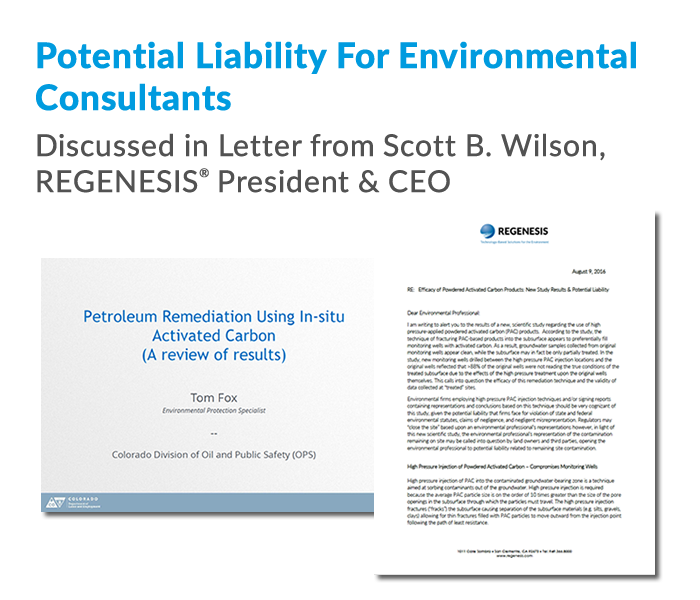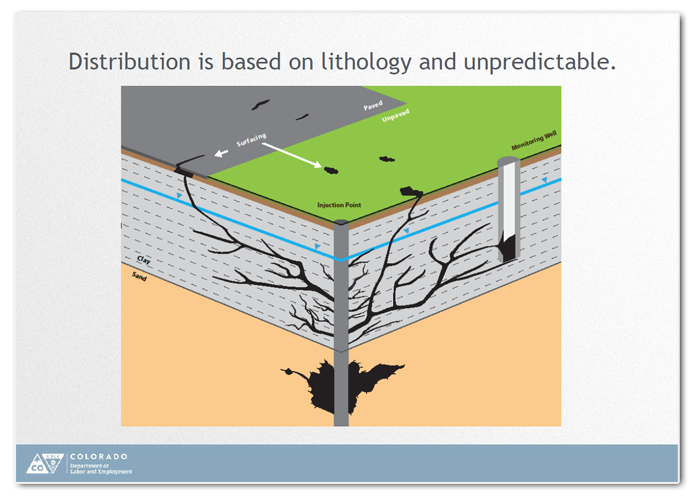The Colorado Division of Oil and Public Safety (OPS) has released a scientific study regarding the use of high-pressure applied powdered activated carbon (PAC) products. According to the study, the technique of fracturing PAC-based products into the subsurface appears to preferentially fill monitoring wells with activated carbon. As a result, groundwater samples collected from original monitoring wells appear clean, while the subsurface may in fact be only partially treated. Read the letter from Scott Wilson to learn more.
The letter reviews:
-
Regulatory study in which >72% of monitoring wells at PAC sites were not reading the true conditions of the treated subsurface
-
Recommendations for caution to environmental firms employing high-pressure PAC injection techniques and/or signing reports containing representations and conclusions based on this technique
-
Possibilty of opening environmental professionals to potential liability related to remaining site contamination at sites that had been previously "closed" by regulators
Click here to read the letter from REGENESIS President and CEO.



